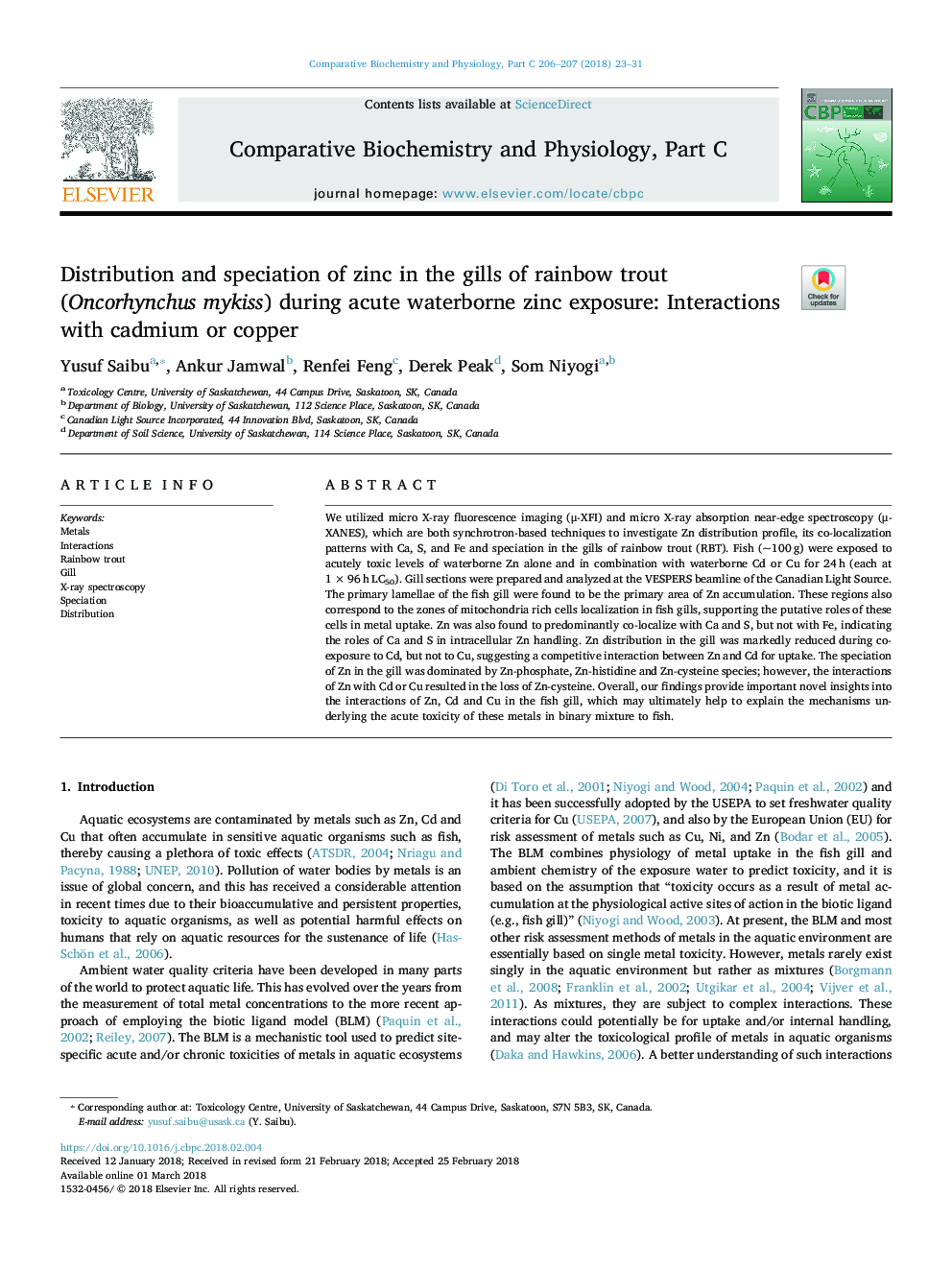| Article ID | Journal | Published Year | Pages | File Type |
|---|---|---|---|---|
| 8319013 | Comparative Biochemistry and Physiology Part C: Toxicology & Pharmacology | 2018 | 9 Pages |
Abstract
We utilized micro X-ray fluorescence imaging (μ-XFI) and micro X-ray absorption near-edge spectroscopy (μ-XANES), which are both synchrotron-based techniques to investigate Zn distribution profile, its co-localization patterns with Ca, S, and Fe and speciation in the gills of rainbow trout (RBT). Fish (~100â¯g) were exposed to acutely toxic levels of waterborne Zn alone and in combination with waterborne Cd or Cu for 24â¯h (each at 1â¯Ãâ¯96â¯h LC50). Gill sections were prepared and analyzed at the VESPERS beamline of the Canadian Light Source. The primary lamellae of the fish gill were found to be the primary area of Zn accumulation. These regions also correspond to the zones of mitochondria rich cells localization in fish gills, supporting the putative roles of these cells in metal uptake. Zn was also found to predominantly co-localize with Ca and S, but not with Fe, indicating the roles of Ca and S in intracellular Zn handling. Zn distribution in the gill was markedly reduced during co-exposure to Cd, but not to Cu, suggesting a competitive interaction between Zn and Cd for uptake. The speciation of Zn in the gill was dominated by Zn-phosphate, Zn-histidine and Zn-cysteine species; however, the interactions of Zn with Cd or Cu resulted in the loss of Zn-cysteine. Overall, our findings provide important novel insights into the interactions of Zn, Cd and Cu in the fish gill, which may ultimately help to explain the mechanisms underlying the acute toxicity of these metals in binary mixture to fish.
Related Topics
Life Sciences
Biochemistry, Genetics and Molecular Biology
Biochemistry
Authors
Yusuf Saibu, Ankur Jamwal, Renfei Feng, Derek Peak, Som Niyogi,
